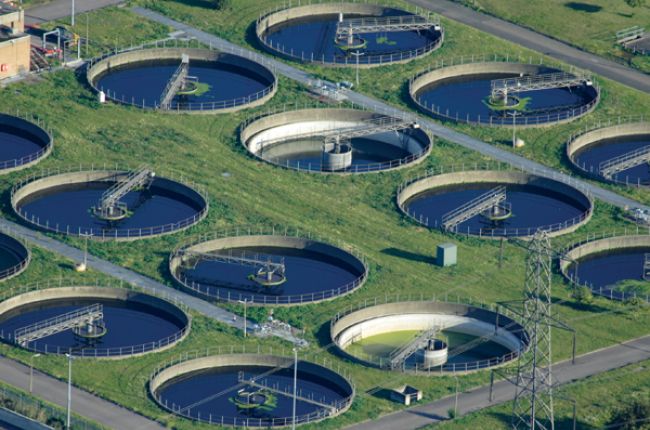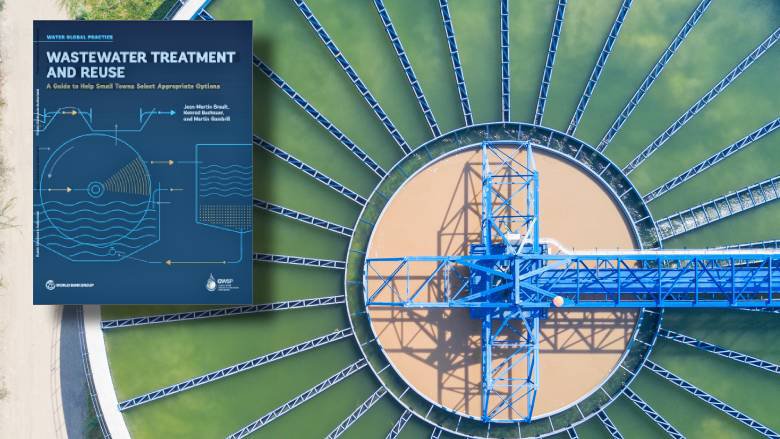Strategic Approaches to Improve Drainage Therapy Effectiveness and Reduce Ecological Impact
In the realm of waste water therapy, the mission for enhanced performance and decreased environmental influence is a continuous difficulty that demands calculated services. The assimilation of innovative treatment modern technologies, energy-efficient processes, resource recovery strategies, improved nutrient removal strategies, and wise monitoring and control systems stands for a multifaceted structure for attending to these pushing worries.
Advanced Treatment Technologies
Cutting-edge membrane purification systems have reinvented innovative wastewater treatment processes, considerably improving the removal of pollutants. These innovative systems function forcibly water through a semi-permeable membrane layer, efficiently separating pollutants from the water stream. The membrane layer's microscopic pores trap toxins such as bacteria, viruses, and suspended solids, permitting just cleansed water to travel through. This technology has verified to be very efficient in eliminating a vast array of contaminants, including pharmaceuticals, heavy steels, and natural substances, which are often challenging to get rid of with standard therapy approaches.
In addition, membrane layer filtering systems use various advantages over conventional treatment approaches. They call for much less area, produce higher-quality effluent, and are more immune to changes in influent water top quality. Additionally, these systems are extremely flexible and can be quickly integrated right into existing therapy plants or used as standalone units for decentralized applications. As the need for clean water continues to climb, the fostering of sophisticated membrane purification innovations is vital to guarantee lasting and reliable wastewater treatment practices.
Energy-Efficient Procedures
The integration of energy-efficient procedures in wastewater therapy systems is crucial for maximizing resource use and decreasing functional prices. One vital approach to enhancing energy effectiveness in wastewater therapy is the application of advanced aeration systems, such as fine bubble diffusers or surface aerators, which can enhance oxygen transfer performance and lower power intake.
Furthermore, optimizing process control and automation through making use of advanced sensors and keeping an eye on systems can boost total power effectiveness by readjusting procedures in real-time based on actual demand and conditions. Implementing energy audits and frequently keeping an eye on power efficiency signs are necessary methods to determine locations for enhancement and track energy-saving efforts efficiently. In general, the adoption of energy-efficient processes in wastewater treatment not only profits the environment however likewise adds to long-term expense financial savings and operational sustainability.
Resource Recuperation Methods
With an emphasis on enhancing source usage and sustainability in wastewater treatment systems, the implementation of source recuperation methods arises as a critical aspect in enhancing functional performance. Resource recovery strategies in wastewater therapy entail the recognition and extraction of beneficial sources from the waste stream, thereby transforming what was when thought about waste right into a beneficial asset. website link By executing resource recovery methods such as nutrient removal and recovery, energy generation from raw material, and the manufacturing of recyclable water, wastewater treatment plants can lessen environmental effect while maximizing performance.

Improved Nutrient Removal Techniques
Executing advanced nutrient elimination methods is crucial for optimizing the effectiveness of wastewater treatment systems. One of the essential techniques made use of for enhanced nutrient elimination is the procedure of biological nutrient removal (BNR), which includes the removal of nitrogen and phosphorus via biological processes.

In enhancement to BNR, progressed treatment approaches such as membrane layer bioreactors (MBRs) and constructed wetlands can also be used to improve nutrient removal effectiveness. MBRs utilize membrane layers to achieve high-grade effluent requirements by efficiently eliminating nutrients and suspended solids. Constructed wetlands resemble natural marsh procedures to eliminate nutrients via plant uptake, microbial activity, and sedimentation. By incorporating these innovative nutrient elimination techniques right into wastewater treatment industries, systems and municipalities can successfully lower nutrient pollution and protect the environment.
Smart Monitoring and Control Equipment
Using innovative innovation, the integration of clever surveillance and control systems reinvents the operational performance of wastewater therapy facilities. These systems include sophisticated sensors and information analytics to constantly keep track of vital criteria such as pH levels, turbidity, liquified oxygen, and flow prices in real-time. By gathering and evaluating this information, operators can gain useful insights right into the performance of the therapy processes, making it possible for positive changes to enhance therapy effectiveness.
Smart surveillance and control systems likewise sustain remote tracking capacities, enabling drivers to access real-time information and control features from off-site areas. This remote ease of access boosts operational adaptability and responsiveness, enabling quick treatments in situation of system breakdowns or fluctuations in influent high quality. Furthermore, the predictive upkeep capacities of these systems help stop tools failures and lessen downtime, inevitably improving the general integrity of wastewater treatment operations (Waste Water Treatment).
Verdict
In conclusion, tactical methods such as innovative therapy innovations, energy-efficient procedures, source recuperation strategies, enhanced nutrient removal methods, and wise surveillance and look what i found control systems play an important function in improving wastewater therapy performance and decreasing ecological influence. By applying these techniques, wastewater therapy plants can boost their overall efficiency, lower energy usage, recuperate important resources, and guarantee compliance with environmental regulations. These methods are important for sustainable and efficient wastewater monitoring techniques.

In verdict, calculated strategies such as sophisticated therapy technologies, energy-efficient processes, resource recuperation approaches, boosted nutrient elimination techniques, and clever monitoring and control systems play a vital duty in enhancing wastewater therapy performance and lessening ecological impact.